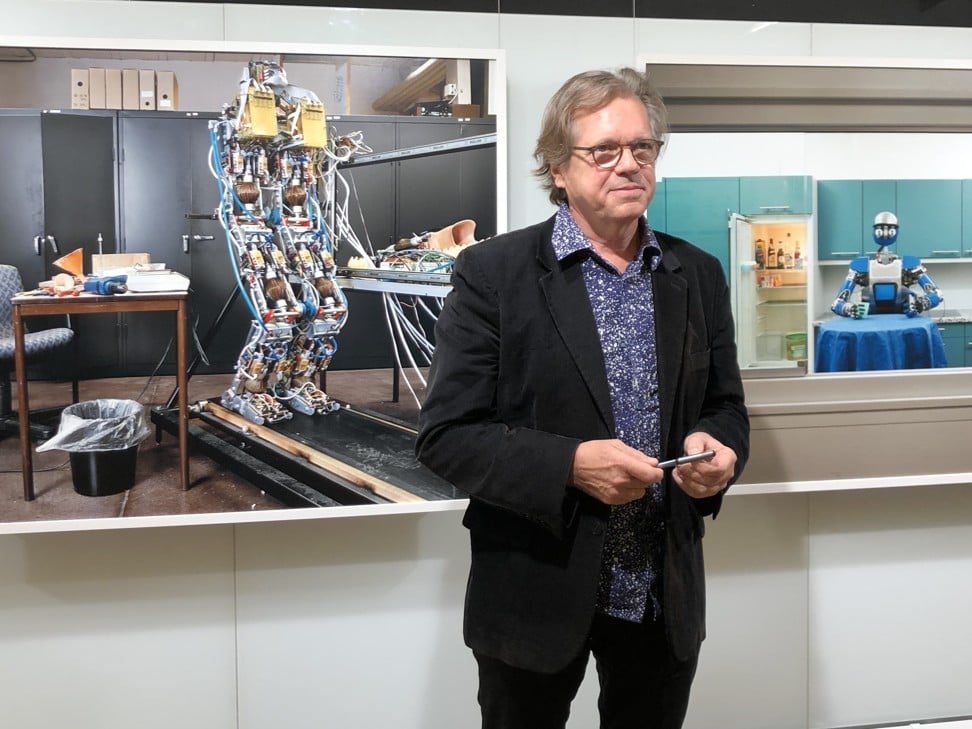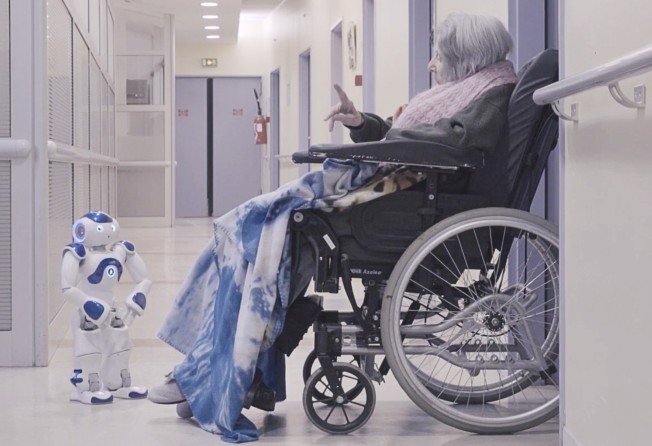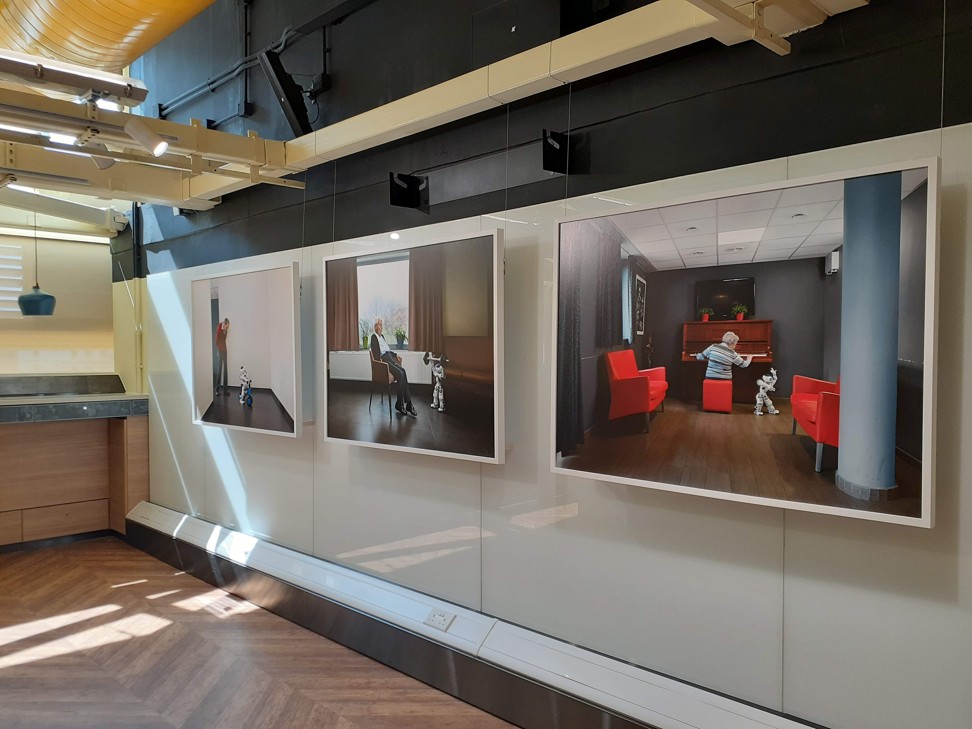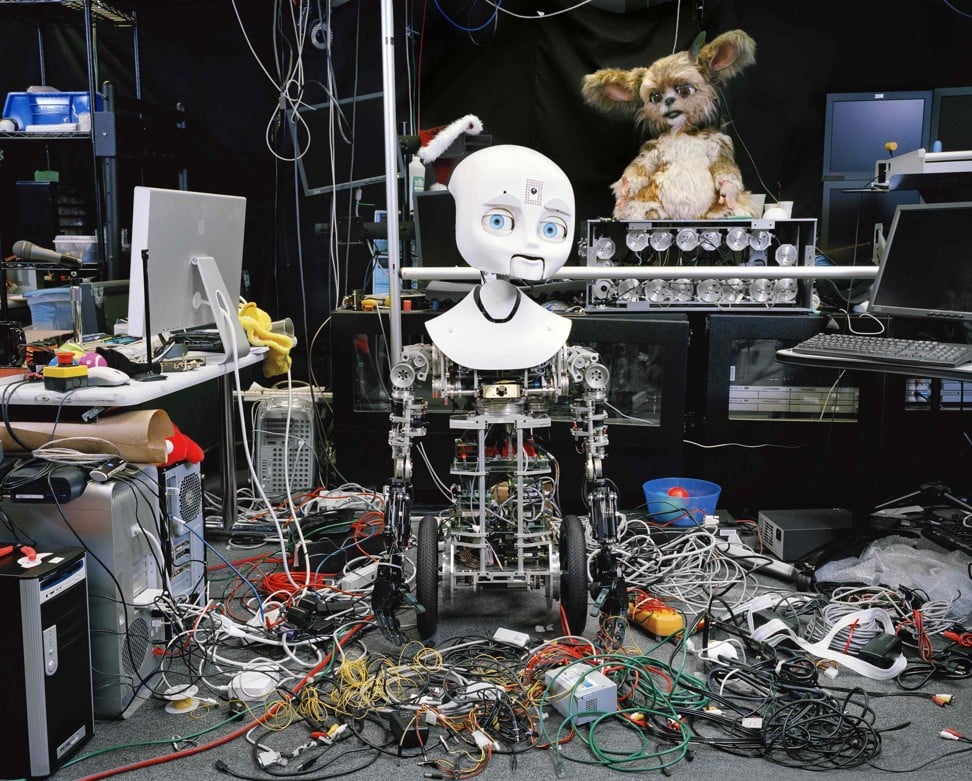
How robots can make elderly patients happy captured in French artist’s Hong Kong exhibition
- Videos and photos captured by Yves Gellie document hospital and nursing-home patients interacting with a robot that talks, plays games and dances
- In one clip, a woman who usually does not speak chats to the robot about birds and their shared dream of learning to fly

Are robots a threat to the human race? Not if you look at photographs and videos taken by Yves Gellie, who spent two years visiting hospital patients and nursing home residents in France and Belgium to capture their encounters with a particular robot.
In his debut solo show in Hong Kong, “The Age of Robots”, the French artist not only explores our fascination with robots but how communication with machines can be beneficial to the human race.
Describing the videos as an “anticipative documentary”, Gellie says the series foreshadows a future in which humans and machines will grow closer to each other.
“It’s describing the conditions in which people decide to establish a relation with the robot,” he says. “I’m not a scientist. I’m not trying to prove anything. I just explore a [moment] between these two creatures.”

For his project the artist was allowed to make recordings of patients interacting with a robot in these institutions.
The small robot, with a childish voice and friendly blinking eyes, chats, plays games and dances with the elderly – some with Alzheimer’s or dementia – and younger patients with autism or neurological disorders.

In one video, a man named Mr Bouchot asks the staff to dress the robot as a girl and declares his love for it.
“He was playing for sure, but for him it was a great moment in his loneliness in the hospital,” Gellie says. “It was like theatre for him … and we have a testimony [of that].”
In another clip, the robot has an intimate dialogue with a woman, a Mrs Gautier, who usually does not speak. The two chat about birds and their shared dream of learning how to fly.
“It was so emotional because she was so passionate when she talked about birds. The nurse behind me was crying,” Gellie says.


As well as the videos, Gellie took photographs depicting scenes from interviews with elderly-home residents, who were asked to imagine a situation in which the robot is fully autonomous.
One of the residents said she wanted the robot to do something that surprised her every morning. Gellie and his team made the robot lift a dumbbell and captured her surprised expression.
“It’s a well organised snapshot. It’s fantastic because she enjoyed it all day. She was so happy that the robot did that especially for her,” he says.
In the video there is a lady who said ‘I love your smile,’ but the robot doesn’t smile. There’s all this imagination behind [these moments], so I love when he creates this kind of reaction
But his favourite shot is a woman playing the piano while the robot dances next to her.
The woman initially refused to interact with the robot for months. After noticing that the woman constantly sang three notes throughout the day, Gellie built the scene by playing the song on the piano.
Soon, the woman took over and began playing the notes. While she played, the robot, who was close by, began to dance beside her. The woman looked down at the robot and said: “Wow, you are dancing well. Very nice.”
She started to play again and the robot continued to dance, getting more compliments from the woman.


For Gellie, it was important to capture the scenes organically.
“The fact that I used large frames, no movement of camera, no subjective camera … it’s because I wanted to make the scenes very easy – just one person and one robot. If it works, it’s magic. If it doesn’t, nothing happens,” he says.
In terms of his own relationship with the robot, however, Gellie says it was not always easy.
“I was very p***** off with him all the time because he was never working. He always broke his legs or knees and stopped moving in the middle of the magic moments. But sometimes it does the job,” he says.
“In the video there is a lady who said ‘I love your smile,’ but the robot doesn’t smile. There’s all this imagination behind [these moments], so I love when he creates this kind of reaction.”
Other photographs in the exhibition include Gellie’s Human Version series, which explores labs developing humanoid robots across the world.
The exhibition, being held at TriAngle on the Shaw campus of Baptist University, also features creative work produced by university alumni and students in response to Gellie’s photographs and films.
The Age of Robots, October 31 to November 16, Baptist University. Opening hours: 10am-7pm